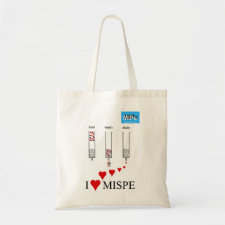
Authors: Ullah B, Khan SR, Ali S, Jamil S, Saeed Ashraf Janjua MR
Article Title: 4-Nitrophenol imprinted core-shell poly(N-isopropylacrylamide-acrylic acid)/poly(acrylic acid) microgels loaded with cadmium nanoparticles: A novel catalyst.
Publication date: 2021
Journal: Materials Chemistry and Physics
Volume: 260
Article Number: 124156.
DOI: 10.1016/j.matchemphys.2020.124156
Alternative URL: https://www.sciencedirect.com/science/article/pii/S0254058420315169
Abstract: 4-nitrophenol imprinted poly(N-isopropylacrylamide-acrylic)/poly(acrylic acid) [p(NIPAM-AAc)/p(AAc)] microgels are synthesized by precipitation polymerization. 1 and 95 mol % of AAc is incorporated in core and shell of synthesized microgels respectively, so that shell can be swollen up to large extent instead of core part. Cd nanoparticles are synthesized within core using in situ reduction. Size of Cd nanoparticles and structure of microgels are analyzed by STEM, FTIR and UV-Vis spectroscopy. Series of 4-NP and its derivatives (nitroarenes and azo dyes) are reduced by using synthesized microgel as catalyst in aqueous medium. Significant difference in apparent rate constant (kapp), percentage reduction and reduction time among 4-NP and its derivatives is observed. This shows that 4-NP imprinting has affected the sieve of microgels and orientation of carboxyl groups (COOH) of AAc. Effect of solvents on catalytic reduction of 3-NP is also studied using synthesized microgel as catalyst. Significant difference in kapp, percentage reduction and reduction time of 3-NP in different solvents is also observed. 95% AAc in imprinted shell is observed as capable catalyst for reduction of 4-NP template and its derivatives. Synthesized microgel has multiple features: 4-NP imprinting, core-shell structure and 95% AAc in shell. All of these features are helped in the catalytic reduction of nitro compounds. The compounds similar to 4-NP are reduced more as compared to other compounds due to 4-NP imprinting. This shows that synthesized MIP is more effective for reduction of compounds similar to 4-NP. High mol percentage of AAc monomer within shell is facilitated the diffusion of substrates towards nanoparticles embedded in core. Possible product formation of nitroarenes and azo dyes in the presence of microgel was reported. Effect of different solvents on catalytic reduction of 3-NP is also observed
Template and target information: 4-nitrophenol, 4-NP
Author keywords: microgel, imprinting, nanoparticles, Recognition, catalysis



Join the Society for Molecular Imprinting

New items RSS feed
Sign-up for e-mail updates:
Choose between receiving an occasional newsletter or more frequent e-mail alerts.
Click here to go to the sign-up page.
Is your name elemental or peptidic? Enter your name and find out by clicking either of the buttons below!
Other products you may like:
 MIPdatabase
MIPdatabase









